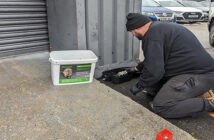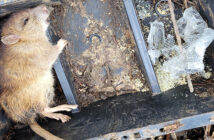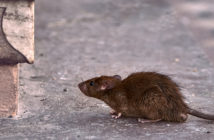Those who attended the rodenticide resistance session at PestEx 2015 heard that, whilst anticoagulant resistance is a Europe-wide problem, it is not receiving any sort of coordinated European response. Rather, individual European governments are ‘doing their own thing’ and, in some instances, thats aggravating the problem.
Speaking at PestEx 2015, independent consultant and chair of the Rodenticide Resistance Action Group, Dr Alan Buckle gave an overview of anticoagulant resistance – not just in the UK, a subject that is often covered, – but from a European perspective.
|
The key to appreciating his presentation was an understanding, at the molecular level, of how resistance occurs and why this resistance can exhibit itself in different ways. Not an easy subject to grasp but Alan succeeded in describing the various mechanisms in a way that the average pest controller would understand. In summary ALL of the mutations leading to anticoagulant resistance in rats are present in the UK, most are in France, two in Belgium and only one in Holland and, surprisingly, just one in Germany. Mouse resistance to anticoagulants is rife throughout Europe. Alan’s prime concern is that the reaction of the various European governments to the issue, are not coordinated and, in some instances, may aggravate the problem. Whilst Holland has restricted chlorophacinone to professional use only, Scandinavia has restricted the more potent SGARs to indoor use only, just as the UK is about to do the opposite! European Chemical Agency threat |
|
|
|
If the European Parliament was to accept these proposals, any baits with a concentration above this level would be restricted to ‘professional use only’. Currently first-generation anticoagulant rodenticides (FGARs) are in the range 250 to 300ppm and second-generation anticoagukant rodenticides (SGARs) are generally at 50ppm. At a concentration of 30ppm, FGARs would have no efficacy and SGARs would only have limited efficacy. Whilst many pest controllers may perceive restricting rodenticides to ‘professional use only’ to be a good thing, once the term ‘toxic to reproduction’ appears on rodenticide labels, Dr Buckle fears that there will be an unfavourable reaction from clients, who may not want such products used on their premises. |
||





